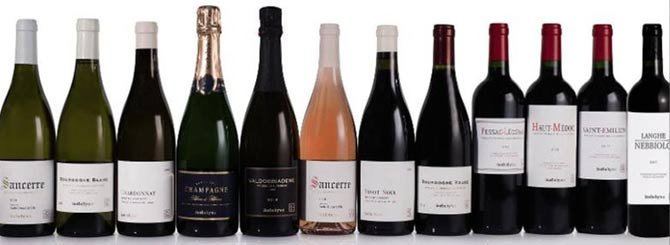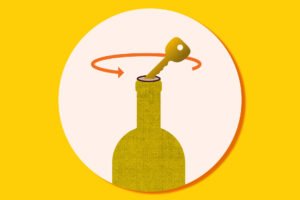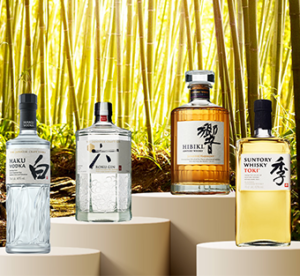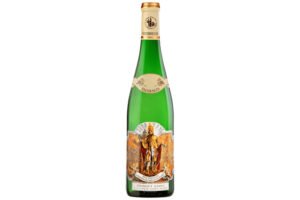Sotheby’s Wine Label a Successful Step

[ad_1]
The venerable auction house launched its own wines last year, and we wondered how they were doing.
Sotheby’s officially launched the Own Label Collection in November of 2019 and it’s already garnering somewhat of a buzz within the US wine industry.
Jamie Ritchie, chairman of Sotheby’s, credits the desire to bring top-quality wine that reflects the company’s “mission and standards” at an affordable price to consumers as the inspiration behind the project. Wine-Searcher sat down with Ritchie to talk about Sotheby’s new line of wines, covering everything from inspiration to vinification to decision-making and a handful of details in between.
What was the inspiration for creating the collection?
Selecting wine can be intimidating for many people, and so it has been our intention to launch a range of Sotheby’s-branded wines that will assure the consumer that they are getting the best value from classic regions at affordable prices. We have both the expertise and relationships to ensure that each wine is of high quality, authentic to the region, and good value for the money. The Sotheby’s Own Label Collection of wines has been one of the most exciting projects that we have worked on, as it expands our business in a new direction. We have been looking at various ways in which we can expand our retail offering and we think this collection offers great value for wine buyers.
How were the 12 regions decided upon?
We wanted to launch our initial range with 12 wines: six red, three white, two sparkling, and one rosé. Most of the initial 12 are the wines/appellations that have sold best in our New York retail business. We will be adding additional regions to the range of wines in 2020.
Which producers/growers are you working with?
The details of each producer and each wine [are available on the Sotheby’s website]. The wines were sourced from producers whose wines we like and with whom we have great relationships. In terms of US domestic producers, Matt and Sara Licklider from Lioco have produced our Sonoma Chardonnay and Sonoma Pinot Noir, both of which exemplify the style of wines that we admire from California, as they embrace the climate, but retain acidity and freshness, so they are also balanced and harmonious.
Our Champagne is from R&L Legras, with whom we have been working since 2008. Our Sancerres are made by Firmin Dezat, who manages André Dezat and makes very classical, crisp, mineral wines. The red and white Burgundies are made by Jean-Baptiste Clair from Francoise et Denis Clair – we selected our favorite vineyards, which are actually both premier cru, but we labeled them at Bourgogne Blanc and Rouge, as that is the quality level that we wanted to have. Each of our Bordeaux comes from favorite producers at these affordable price levels: Annabelle Cruse-Bardinet at Château Corbin, Véronique Sanders at Château Haut-Bailly (Pessac-Leognon), and Emmanuel Tessandier from Cru Bourgeois Château Maucamps. Our Langhe Nebbiolo is classic Nebbiolo from Elise Scavino at Paolo Scavino and our Prosecco is from Mongarda – this is Brut with only 4g/l and much drier than most Prosecco. The Chablis is from the Union des Viticulteurs (who make La Chablisienne) and it is their Pierrelee cuvée, our favorite value, which we named “Enchere”, which is French for “bid”.

© Sotheby’s
| The full range reflects the company’s roots in the auction business.
Are these producers making special cuvées at their respective estates exclusively for Sotheby’s?
No, these are wines that these producers are already making but are labeling them with the Sotheby’s label. This has been a pilot project to test the market for Sotheby’s-branded wines and the launch has been very successful. So, as we expand and add scale, we will have the opportunity to also add special cuveés.
Tell us a bit about the designs of the labels. How are they decided upon? Are they different for each wine?
Each label was created to be part of the Sotheby’s family of own label wines, so they make sense when you see them together and as we expand the range. But, while they follow the same organizational structure, each is made to reflect both the specific region and the producer by using their fonts or characteristics. If you look at each label, it reflects the characteristics of both the region and the producer. For example, the whites often have a green letter to start, the rosé lettering is pink, and the reds are red. The font and design of the Sancerre and Chablis are traditional to the region. The Pessac and Saint-Émilion both reflect the fonts and designs from Véronique and Annabelle. The labels are designed to be simple, clean, and easy to read. Also, reflecting our auction heritage, each wine has been given a specific “lot” number that references one of the characteristics of the producer. And, as mentioned above, we called the Chablis “Enchere”, to also reflect our auction heritage.
Are these wines sold on and off premise as well or only direct to consumer? If on and off premise, where can consumers buy these wines?
At this stage, the wines are only available from the Sotheby’s Wine retail store in New York. As we expand, we will look at different distribution strategies.
Why should consumers consider these wines over other typical expressions from the regions you’re working with?
I think these wines appeal to people who want the reassurance that these specific bottles offer great value for money and each one is very typical of the region/appellation and a classic example that is very well made.
I tasted the Champagne and loved it and just saw now that it is only $37. That’s super competitive (and impressive) pricing. Could you tell me more about the wine?
I first tasted this Champagne in 1991 in Sotheby’s boardroom (having been bought it by our now honorary Chairman, Serena Sutcliffe, MW) and served it at my 40th birthday party. In 2008, when we acquired the retail business, we contacted Julien Barbier and started offering R&L Legras Champagne in the US. Around 2010, we introduced Sotheby’s Champagne as our first “own label” wine. It is a Blanc de Blancs from 100-percent grand cru vineyards in Chouilly, which brings both versatility and complexity. This is a Champagne that can be enjoyed from morning until the next morning!
What standards are put in place for the fruit/vineyards used to produce these wines?
We know and trust our partners – no standards are required because of the quality that they produce.
[ad_2]




